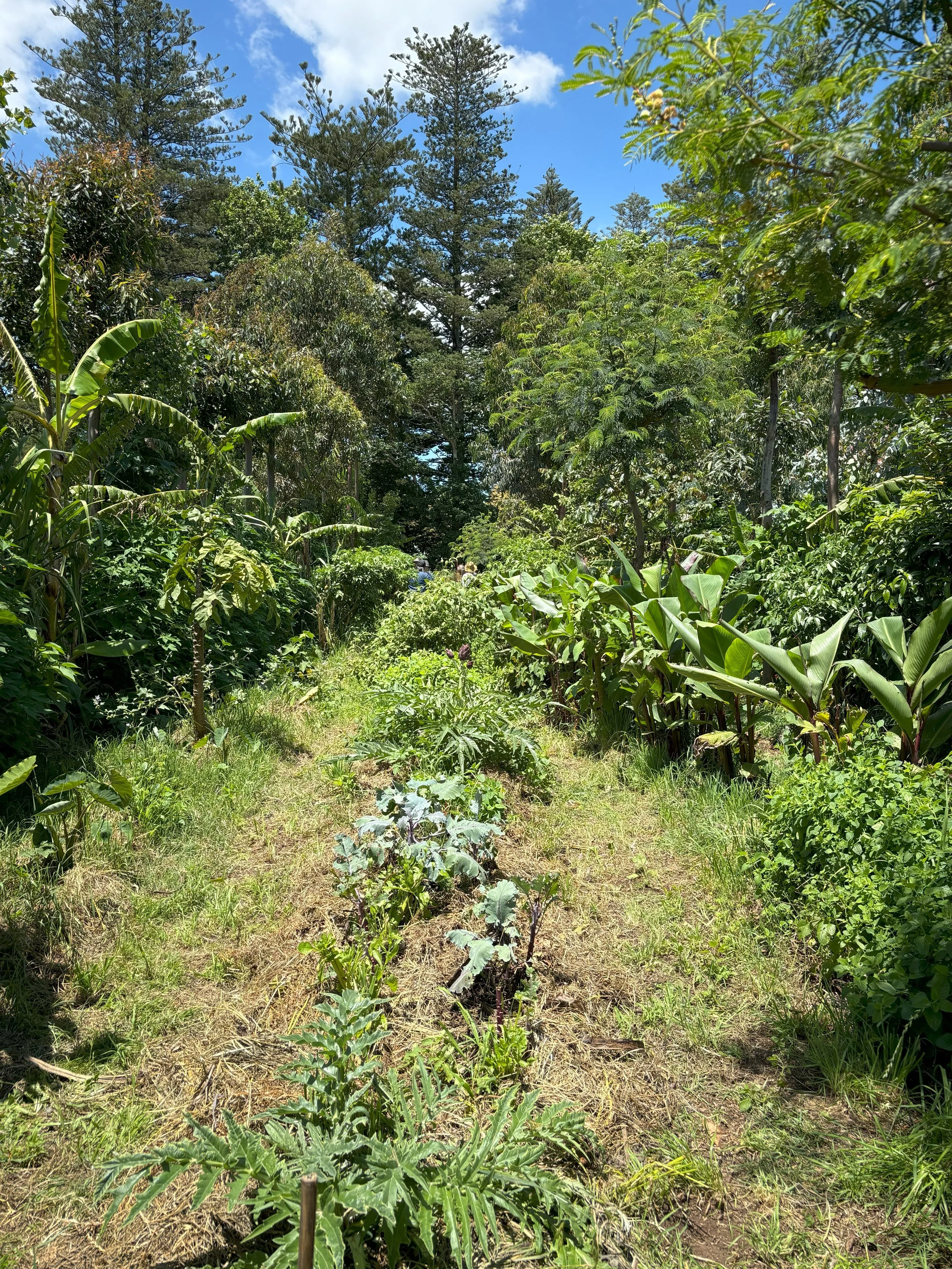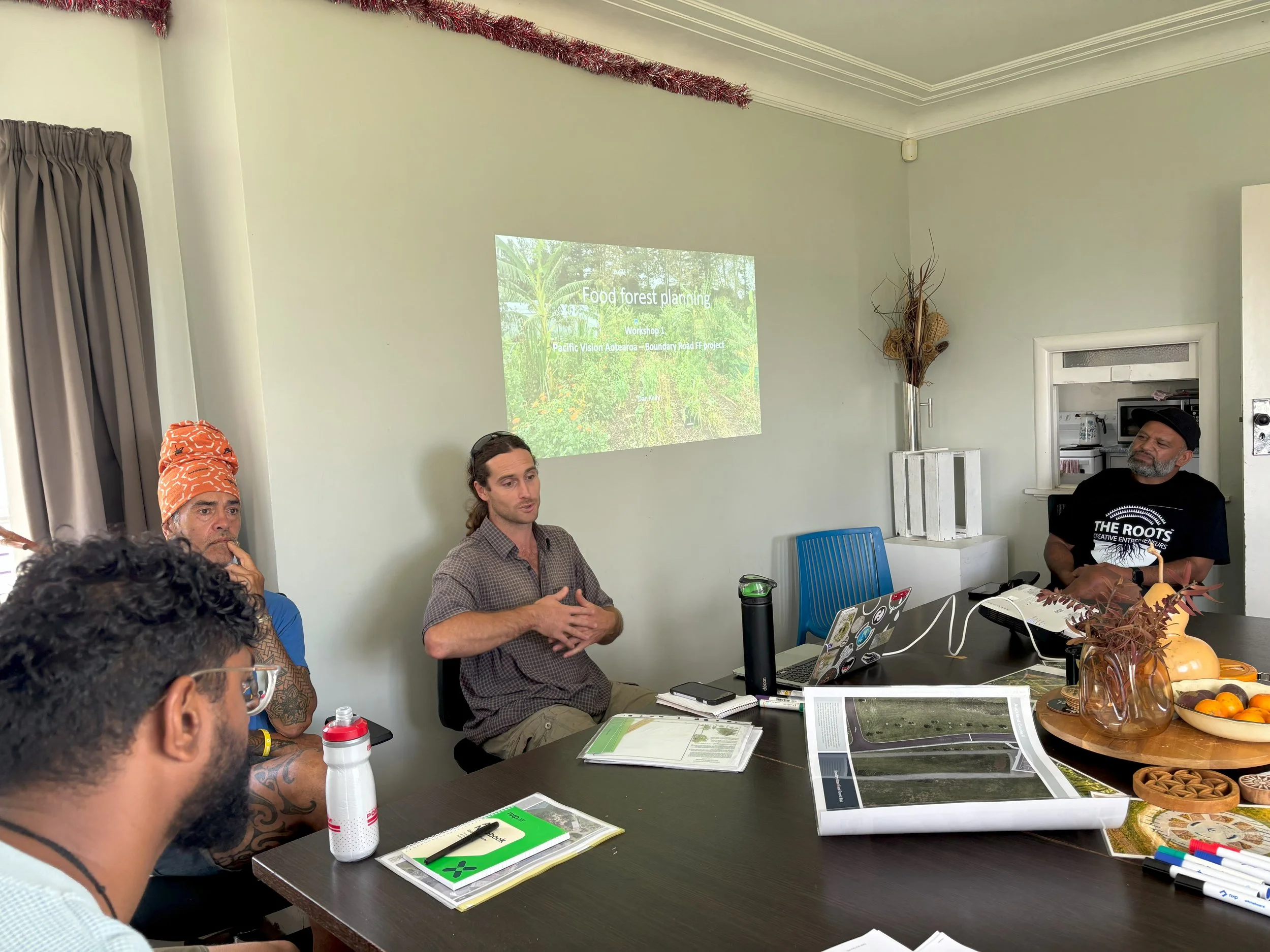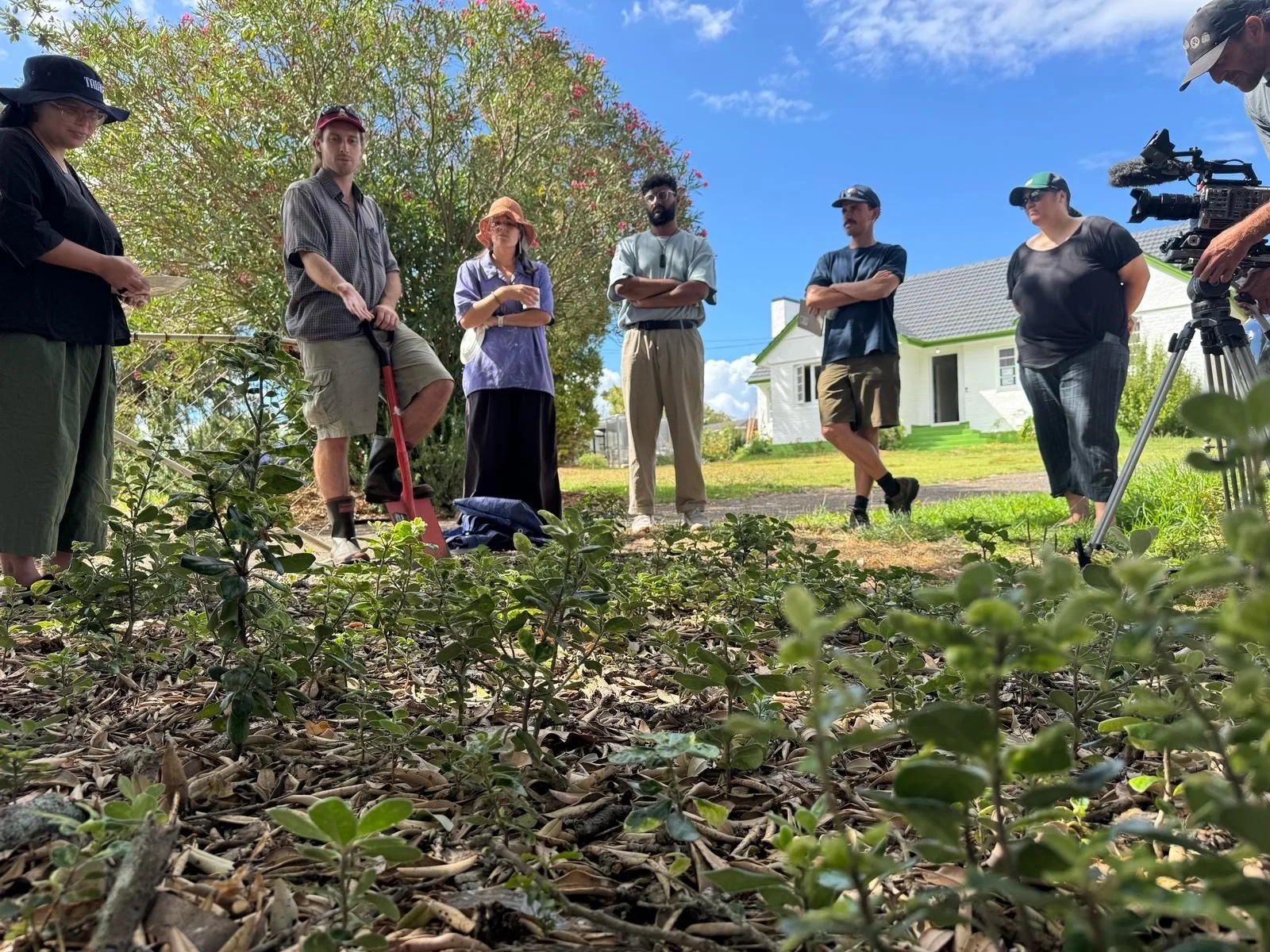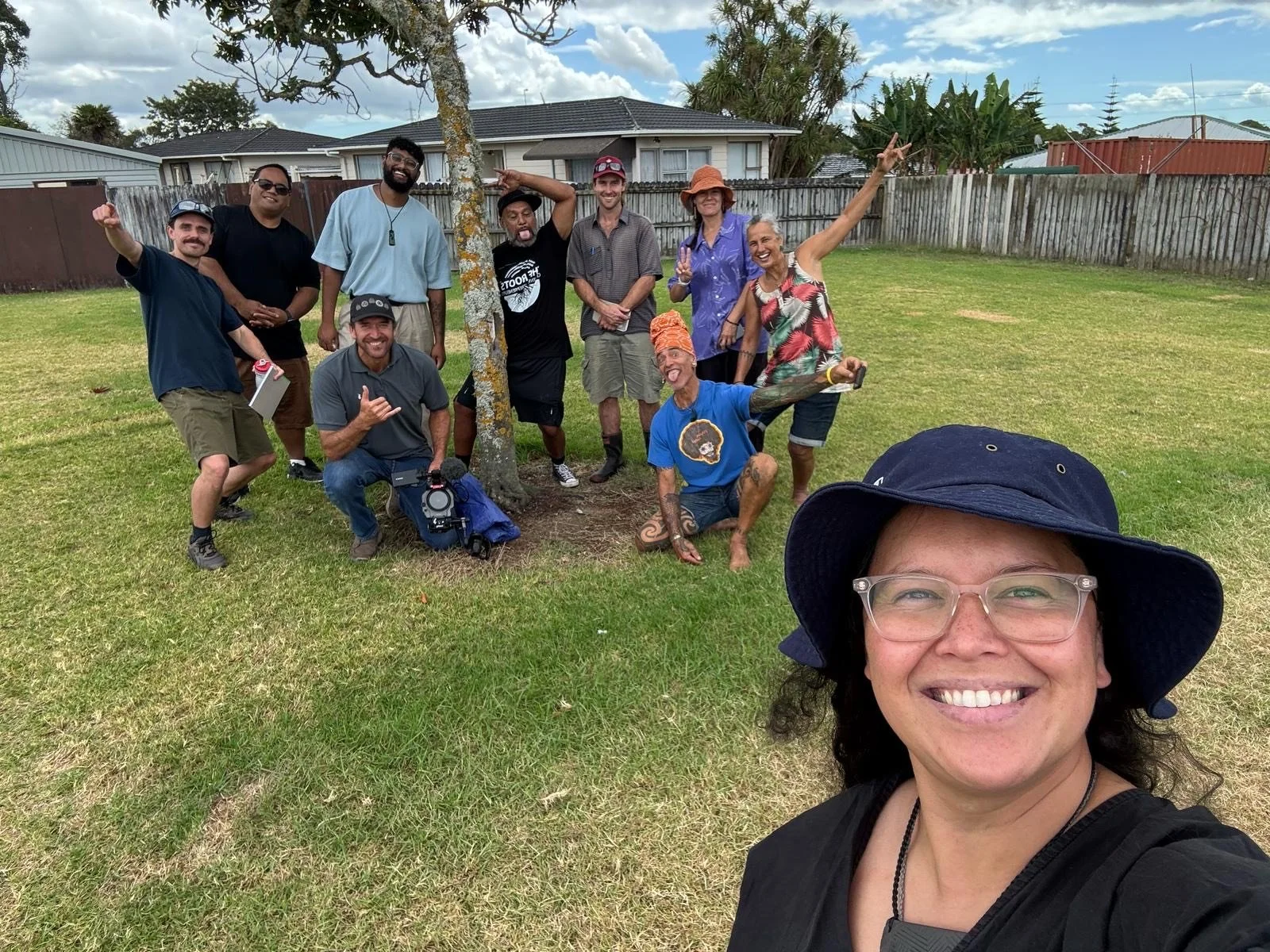Journey to a Food Forest
In February we had a day of imagining a food forest at Boundary Rd. This was our second session with Food Forest Mentor Dan Kelly that followed on from our visit to the Food Forest at Papatūānuku Kōkiri Marae in December last year. To start we deepened our connections with whakawhānaungatanga before visioning a future with our ideal foodscape environment.
Food Forest at Papatūānuku Kōkiri Marae December 2024
For many a future foodscape environment was a place to feel safe, calm, and a quiet place in an urban area. Some of us noted that hearing the song of manu (birds) would be a sign of a healthy environment. Whakaaro that a food forest could offer shade and respite from the climate was important to the group, and with future warmer temperature - an opportunity to grow a variety of tropical fruits (mangoes!) was appealing to the group. Another aspiration was a future of green canopies with a diverse range of plants and trees that are connected to other green canopies via ‘pollinator kaiways’ - a contrast to the current environment in South Auckland where many suburbs have a low tree count . Food Forests were also visioned as Kai Sovereignty, a return to pre European whenua, a place to not only grow kai but tools and everyday items and beautification.
Food Forest Mentor Dan Kelly (centre)
Heading outdoors we looked around at the gardens that have been evolving over the years, the compost bins, the bike hub and the rākau that have resided over the space for many years. Through kōrero it was apparent that entrance ways and the edges were important, options were discussed that encouraged accessibility as well as enclosed the space. Standing under the pōhutukawa at the entrance we noticed many karo seedlings beneath us, this reminded us of the ecological history of the whenua as well as to work with the whenua and its strengths and offerings.
Karo seedlings in the foreground growing in abundance under the pōhutukawa tree.
Dan Kelly dug out a small cube of soil to see its make up. Upon inspection the soil was a good consistency to touch and had earthworms and mycorrhizal fungi present.
Close up of mycorrhizal fungi from the soil
A tīkoki tree around the back of the hub was decided to be the Rangatira of the food forest at Boundary Rd hub. The rākau position on the whenua gave the planning direction in many ways, its sun facing positioning, a potential central point and a wero to give the rākau the mana and mauri it deserves.
Our marker - the Tītoki.
The final part of the workshop for the day was looking into the practical components of a food forest at Boundary. Fruit trees were listed, curves and spirals took shape and a timeline was set.
Mālō ‘Aupito to Auckland Council and Food Forest Mentor Dan Kelly for supporting our journey to a Food Forest at Boundary Rd Ōtāra.





